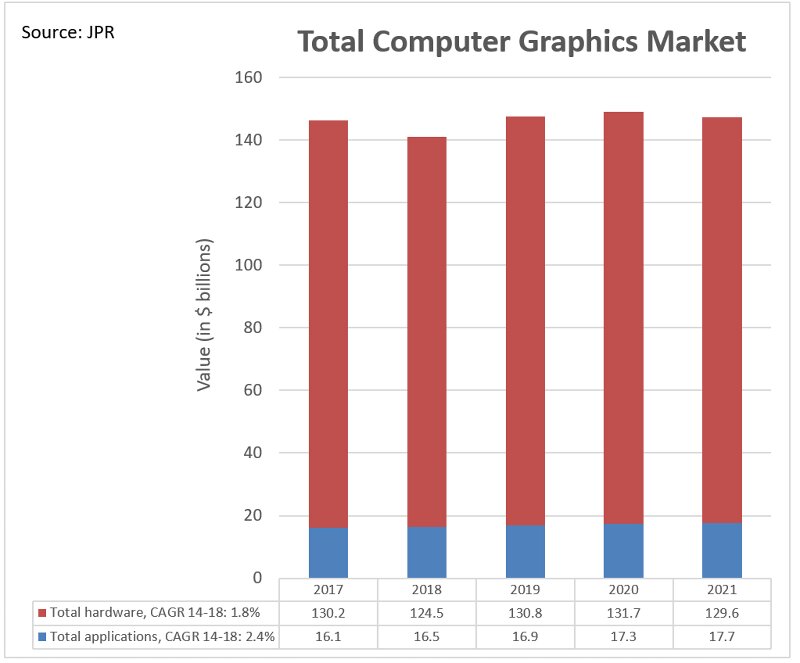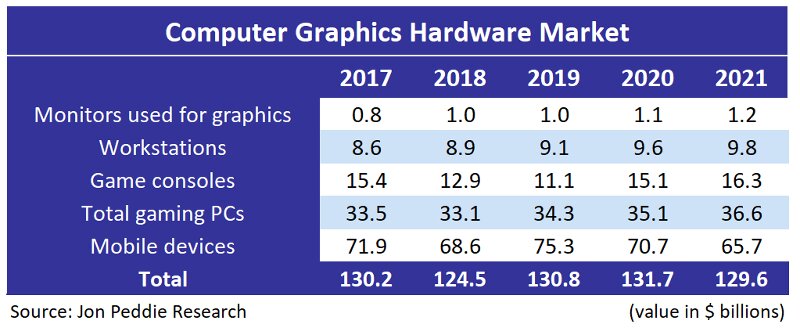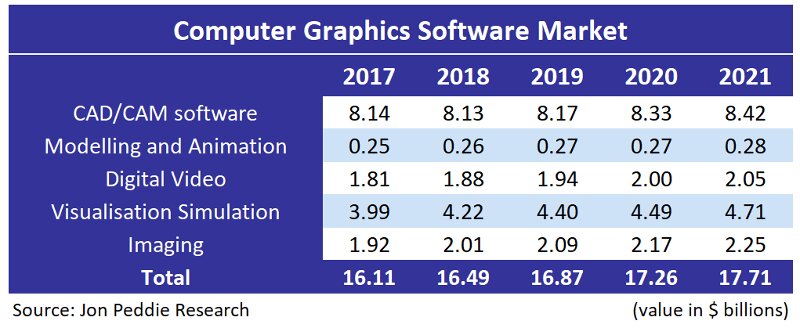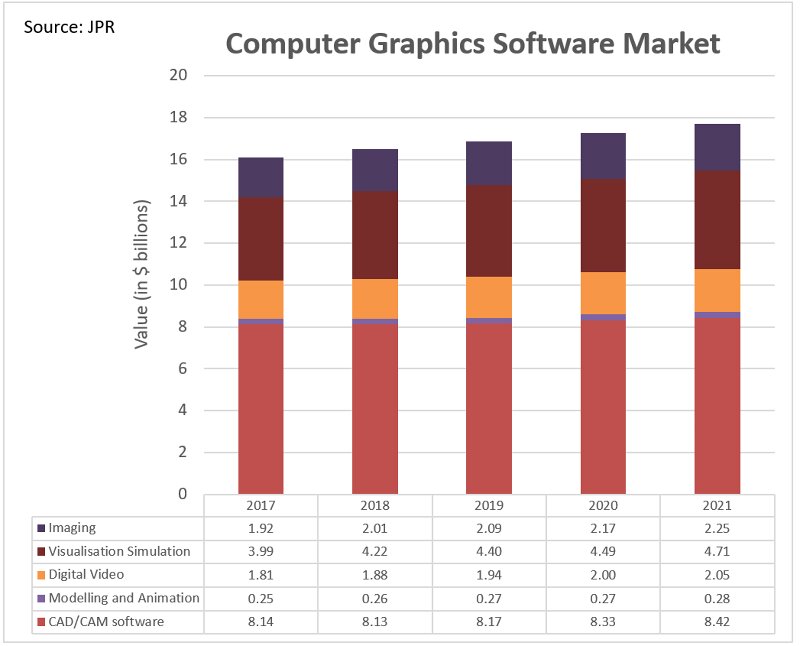Ever since it came into being during the seventies, the computer graphics (CG) industry has been a mixed bag of technologies, users and applications, and has had, for the most part, a consistently lumpy growth record, according to Jon Peddie Research. This growth, largely influenced by hardware, has slowed in the past couple of years and will be low to slow going forward — but it’s growth, nonetheless.
This chart shows the growth in hardware and software and, while software aspects of the market have seen slow to flat growth, hardware segments have been varied, influenced by consumer products such as game consoles. Virtual reality, which has gained a lot of attention, is hardly a factor in either hardware or software and, despite some glowing forecasts, analysts don’t think it will be for a while. The main point of exploration for VR today is in content creation and design for professionals, JPR says.

The computer graphics hardware market was worth $130.2 billion in 2017 and is expected to drop slightly to $129.6 billion by 2021, with software growing slightly more than hardware.

The hardware segment of the CG industry has seen steady overall growth, with ups and downs due to product cycles and the irregularity of the PC market. The largest growth has been in game consoles, gaming PCs and workstations, with the mobile graphics segment declining due to fewer units being sold and dropping ASPs as suppliers compete in a rapidly shifting market.
2017 didn’t see the introduction of any new GPUs and add-in boards (AIBs) — however, several new CPUs and upgraded game consoles were introduced.
The market for CG software in 2017 was worth $16.1 billion (not counting services, maintenance and other aspects) and is expected to grow to $17.7 billion by 2021, as the industry shifts its sales model, moving more services to the cloud and transitioning to a subscriber system.
JPR predicts the expansion of traditional segments like CAD/CAM as new design approaches in automotive, aerospace and architecture are adopted. The visualisation market is growing due to the availability of more powerful and less expensive technologies and as more customers add design analysis to their portfolio. GPU compute employing OpenCL and CUDA is penetrating further into new industries as well as traditional applications, analysts say.


The demand for programmers, artists, scientists and designers continues to be strong and startups are arriving in emerging and reborn markets such as AR, VR and casual games. The arrival of new APIs and platforms are also stimulating development. Firms are actively looking for people who can use and exploit these new programs and associated hardware accelerators.
New opportunities are also growing out of mainstream applications for web and consumer applications. The social web remains a strong engine for growth. Social networks are encouraging people to learn new skills, create content for pleasure and even look for jobs in the field. What used to be a very closed society of experts is now opening up due to the democratisation of CG, fuelled by Moore’s law and price-elasticity due to lower software costs.
JPR says that a new generation of content creators is being born. Video is rapidly replacing text as a form of communication and 3D is finding new outlets. Early examples include the Creative edition of Windows, Adobe’s Project Felix, now known as Dimension CC, game engine tools such as Unreal and Unity, and rendering programs galore.
Cloud-based creation tools have been a bit of a disappointment — those designed to be easy are usually not easy enough and the results are unsatisfactory, while professional tools aren’t designed for creatives, but for engineers. However, attractive pricing models are emerging and the tools will adapt.
Given the trends in dropping costs and the increasing usage of CG tools and hardware, JPR predicts that the rate of growth for the CG industry will remain fairly steady for the foreseeable future. Computer graphics is truly a worldwide industry now.

